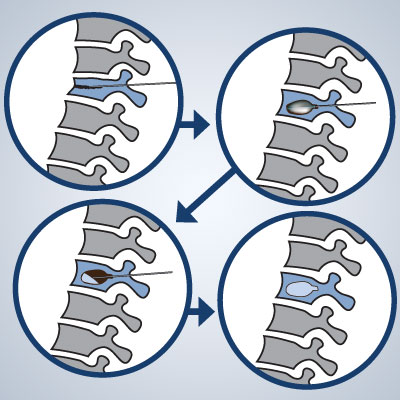Spine fractures
When a vertebra fractures, the usual rectangular shape of the bone becomes compressed and distorted, causing pain. These vertebral compression fractures, which may involve the collapse of one or more vertebrae in the spine, are a common symptom and result of osteoporosis. Osteoporosis is a disease that results in a loss of normal bone density, mass and strength, leading to a condition in which bones are increasingly porous or full or small holes and vulnerable to breaking. Vertebrae can also become weakened by cancer.
Vertebroplasty and kyphoplasty are minimally invasive procedures for vertebral compression fractures (VCF), which are fractures in vertebra, the small bones that make up the spinal column.

